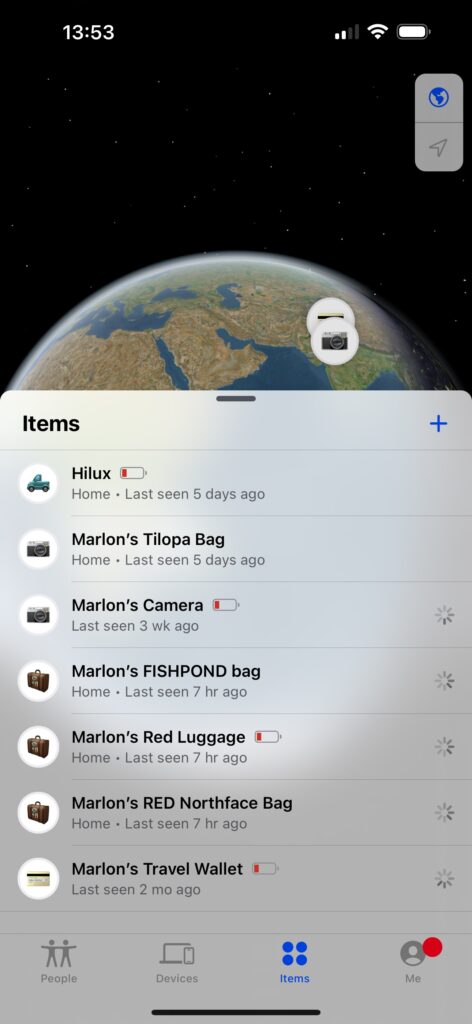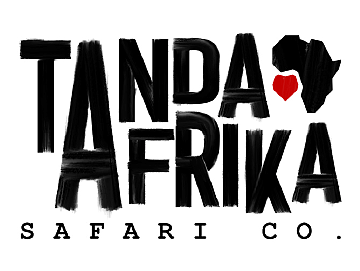Some wildlife photographers tend to overthink this. Some others give it too little thought. So, what is the best way forward?
Keep it simple.
I always try to keep things simple, effective and efficient. This is important. The more options you have, I think the slower you become. On most of the adventures I go out on, I take as a standard 2 camera bodies, and 3 to 4 different lenses. That’s it. This allows me to be decisive, and gets me the shot I am after most of the time.
In this post I will share with you the bulk of my camera setup, to showcase some of the gear I need to use in places like the Himalayas, Costa Rica and Patagonia. For the most part though I try to keep it simple, and effective. I absolutely do not take all of this gear with me every time that I travel, and I think therein lies the secret.
I am fortunate enough to travel with many people from around the world, with a varying skillset when it comes to the art of wildlife photography. Some are only just starting out and others, are already semi-professional. I see many different set ups. Some get it right and some, not so much.
Here are some tips for you to get it right!
- Understand where it is that you are going. Ask the right questions before you depart. Will you need a very long lens? Is the focus on macro photography? Can we follow animals off road to get closer? Will I photograph in low light? All important questions that will help you narrow down the gear you need to take.
- Are there serious weight limitations, or are you free to take what you want?
- Do you already own the gear, or do you need to go out and buy new equipment?
- Are you able to rent some gear to make sure you are covered and set up for the best photographic experience possible?
My Camera Gear
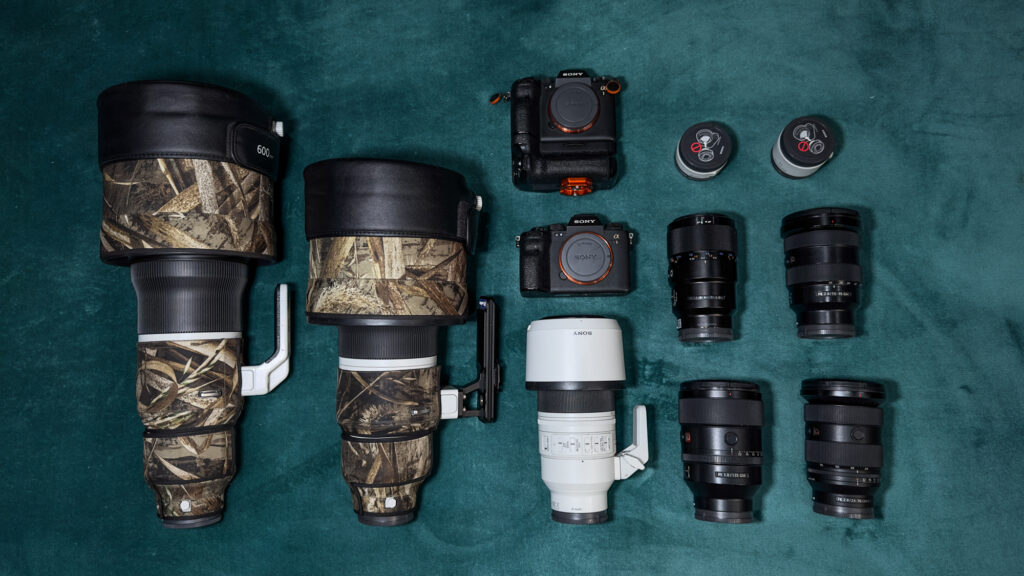
In this picture is...
- Sony 600mm f4 GM
- Sony 400mm f2.8 GM
- Sony 70-200mm f2.8 GM mark 2
- Sony 135mm f1.8 GM
- Sony 90mm f2.8 Macro
- Sony 24-70mm f2.8 GM mark 2
- Sony 16-35mm f2.8 GM
- Sony 1.4x teleconverter
- Sony 2x teleconverter
- Sony Alpha 1 x2
Sony 400 f2.8 GM
For the most part I tend to use my Sony 400mm f2.8. It is a versatile lens, always good to go, and will just about always get you what you are after. I love that I can use it in low light too. This is important as in many places I visit, the predators are most active at dusk, dawn or in the evening after dark. The 400mm is a beast for this and works so well. It’s also a lens that can get great portraits of wildlife, and at the same time, allow me a little room for the surrounding environment. This is key for me and suits my style of photography very well. This is no doubt my go-to lens for wildlife photography. I will always weigh up any other options against this lens first.
Sony 600 f4 GM
There’s a handful of places where I’ll always take my 600mm f4. Places such as East Africa, the Himalayas, the Pantanal. These are great spots for longer lenses and the 600 works so well here. It’s extremely sharp and pairs very well with the two teleconverters. If I am after tight portraits, or birds up close and personal, then this is the lens for the job. At times, I may even take it with alongside the 400mm. It’s a lot of gear to carry, but in destinations like the Pantanal and Costa Rica, it sure helps to have access to both of these lenses at the same time! The 600mm for me is an epic lens, and I love using it! It does get me in tighter than what I am sometimes after, but when it works, it works very well indeed!
Sony 300 f2.8 GM
Then, I have the Sony 300 f2.8 on the way. It’s a lens I’ll use mostly in Southern Africa. In countries like South Africa, Botswana and Zimbabwe, one can follow animals offroad, which means you are always in close proximity to them. The 300mm f2.8 is fantastic in terms of range for this. It is also extremely sharp on both teleconverters, and that makes this lens an absolute gem! It’s a lens that did not excite me all that much when it launched, but having had it in hand, I was blown away by how small it was, how light it was, and just how epic the photo quality was. The bokeh this lens produces is incredible, and it also comes in at a price point that simply can’t be overlooked. This is value at its finest!
Sony 70-200 f2.8 GM mark 2
This lens never leaves my bag, and will travel with me regardless of where I choose to go. It’s a real workhorse and suits my wildlife photographic style well. I love to capture animals within their environments. This is important as it tells a great story, and anchors the image, gives it a sense of place. The 70-200 is great at this! It’s also a lovely lens for video, something I tend to do more of these days than ever before. This lens is also great in low light conditions. I often find myself searching for extra light as the places I visit produce great sightings in low light, such as predators at dusk or dawn. This lens performs beautifully then!
Sony 90mm f2.8 Macro
This is a niche lens that I use in places like Costa Rica. I am warming to the lens, and wish I could take it with me to more destinations. There’s always a little critter that’s interesting and worth photographing, but another lens in the bag makes things more challenging. I do however love this lens and it produces amazing photos!
Sony 24-70 f2.8 GM mark 2
This is a lens that I don’t end up travelling with all that much. I know many people in the video industry swear by this lens and yes, it is a work of art! But for wildlife I often find it is neither here, nor there. I use it in my studio all the time, and for video of close-up interactions this lens is unreal.
Sony 16-35 f2.8 GM mark 2
I kinda always bring this lens along. In the past, I’ve also travelled with the 24-70, a lens I love and also own, but the 16-35 is just such a great focal length and is on the money when I need it. It’s by far the least used lens in my bag, but boy, when I reach for it, I know that something good is on the way! It’s also a great lens for star photography. Simply can’t go wrong! In terms of wide angle lenses, this one is the most versatile in my opinion.
Sony 135 f1.8 GM
This is a lens I love and wish I could have with me more often, for wildlife. It’s not a typical wildlife lens, I know. But, when it works, it works well. The bokeh it’s able to produce really allows your subject to stand out from the background. It’s incredible. I will also be taking this lens with me into the forests of Costa Rica, to photograph some of the smaller creatures. It has a minimum focus distance of 70cm, not too bad at all.
Sony A1
I’ve been using the Sony A1 since it launched. It’s an incredible camera and leaves me wanting for very little. I am a keen videographer too, and the Sony A1 just excels in this regard. It’s also got a fast enough frame rate, the resolution is great, and the dynamic range exceptional. I love this camera and still see it as being relevant! As a pro safari guide I see many guests with other cameras and to this day, the Sony A1 just delivers so consistently. When you’re after those fleeting moments, this is the camera you want in hand to get them!
Sony A9 mark 3
I am about to receive my A9 mark 3. This camera, as we know, is a game changer. It’s incredibly fast making it perfect for any and all action shots. I’ve not had it in hand yet, and have not used it. But, for all I can see, this is the camera to beat! It’s also important to note that I will keep one of my A1’s, alongside this beast. The dynamic range and resolution of the A1 still makes it relevant for me.
The Accessories
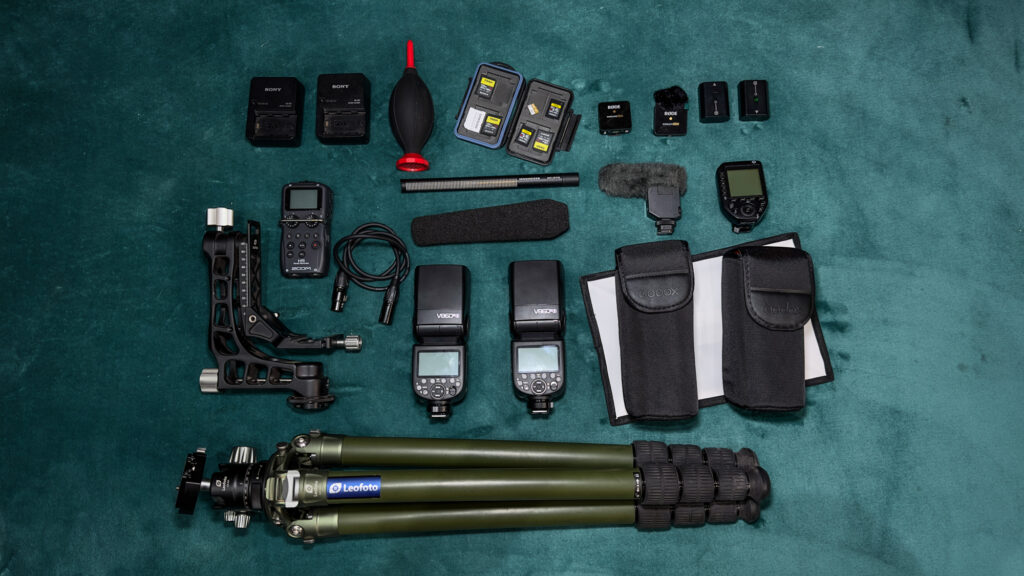
In this picture is...
- Leofoto LM-364CL tripod
- Leofoto LH 40 ballhead
- Leofoto Gimbal PG-1
- Godox V860 III S flashes (and softboxes)
- Godox X Pro II S trigger
- Sennheiser MKH 416 microphone
- Sony ECM-B1M microphone
- RODE Wireless microphones
- Zoom H5 Recorder (provides phantom power to my MKH 416 microphone)
- Memory cards – all TOUGH cards, mainly CF Express Type A, 2 or 3 extra cards per camera
- Batteries – usually 2 batteries extra per camera
Leofoto LM-364CL tripod
I use a tripod from Leofoto. The model is the LM-364CL(Olive) model. I find its strong enough. I’ve taken it to the Himalayas as well as Patagonia. I’ve found it to be very sturdy, and offers a good balance between rock solid steadiness and a tripod that actually still fits into your bags. Brands like Gitzo also sell exceptional tripods and are another to consider. I am however enjoying this brand and the quality has been very good for me and for what I need.
Leofoto LH 40 ballhead
This is the ballhead I went for. I find it works well for landscape photography, anything where you’d mount a smaller lens setup.
Leofoto Gimbal PG-1
This is my gimbal head of choice. Leofoto designed this well, so that it’s still strong, but light. I have considered the Wimberley WH200 too. It’s a tough choice between the two, but thus far, the Leofoto gimbal has not let me down.
Sony ECM-B1M microphone
This is what I usually turn to for audio. It gives me great option to record a variety of different audio, and simply plusg into my hotshoe, no cables, and I am ready to film. It works well and records great audio quality.
Sennheiser MKH 416
I am experimenting with this microphone. It’s not the easiest microphone to take into the field when you are looking for a easy setup, a minimalistic setup. But, I do really value the beautiful audio it can produce. So, I am going to try and take it with me on some occasions. I’ll use a frame from Smallrig around my camera. The microphone will mount to the frame using a floating bracket designed to absorb shock and movement. Then, I also need to mount my Zoom H5 recorder to the cage. This will allow me to use the MKH 416. It needs phantom power, which the H5 recorded provides. I also will have a XLR cable to content with, as well as a AUX cable that plugs into the H5 and into the camera. In addition, I’ll need headphones to monitor audio levels. It’s a more complicated setup when compared to my Sony mic, but want to try this in future to see how it goes.
Godox V860 III S flashes & the Godox X Pro II S trigger
To photograph little creatures like frogs, snakes, and more, I will use 1 or 2 flash units. Then, for birds such as little hummingbirds, I may use up to 4 flash units. I will be visiting Costa Rica in May 2024 and will follow that up with a comprehensive blog on my experience photographing with multiple flashes.
Memory Cards
I use Sony’s TOUGH cards. I still have a mix of cards, but mostly use the CF Express cards, and in terms of size, the 320gb cards. I usually have 2 in each camera, plus 2 spare per camera. I suspect I may need some more cards once I take delivery of the fast-shooting Sony A9 mark 3.
Batteries
I usually have a battery grip attached to each camera body, so that’s 2 batteries being used at any given time. I addition, I have 2 or 3 batteries on standby for each camera, but seldom use them as in most places I can recharge batteries on a daily basis, often twice-daily.
Two very important things
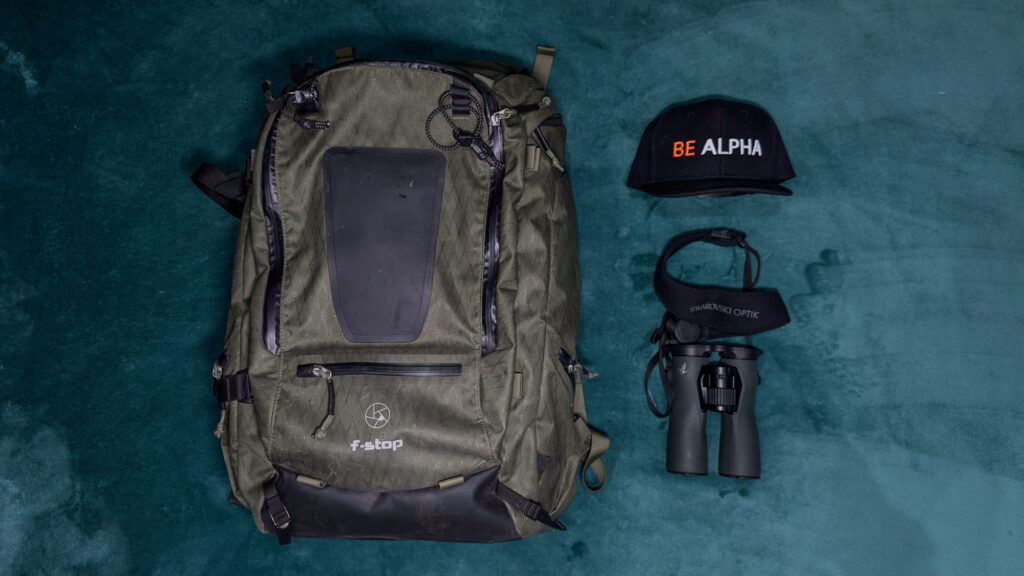
In this picture is...
- f-stop Tilopa Camera Bag
- Swarovski Optik NL Pure 10×42 binoculars
- And a cool Sony Alpha hat 😉
f-stop Tilopa 50l camera bag
This bag is simply incredible. I’’ve used the Tilopa for about 6 years now, maybe even more. It’s never let me down and the latest version, made of a new strong material, is pretty much rip-proof, and also repels rain very well. I don’t even need to take a rain cover with me, the bag is very good just on its own. It also packs a ton of gear, everything I need for every expedition fits into this bag, up to the 600mm lens.
I pair the bag with the XL Pro ICU from fstop, It’s a clever system worth reading more about. You can’t go wrong with this bag and setup.
Swarovski Optik NL Pure binoculars
I always pack binoculars. It’s so important when you are out in nature! I use only Swarovski Optik, and my current model is the NL Pure 10×42. These binoculars have the best optics I’ve ever encountered on binoculars. It won’t make sense reading this here, but it will once you have a pair in your hands, overlooking an open plain in search of wildlife. These bino’s are a joy to use and the first thing that goes into my bag!
Extras I never leave behind
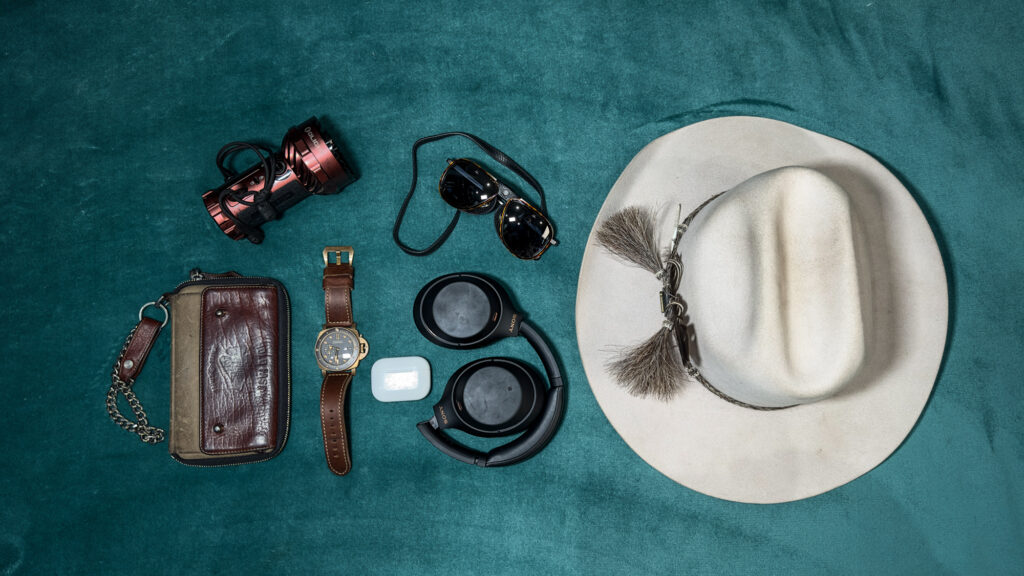
In this picture is...
- Panerai Bronzo ref #pam968
- Holdfast travel wallet
- Vuarnet Glacier sunglasses
- Olight Flashlight
- Akubra hat
- Sony headphones and Apple Air Pods
Panerai Watches
I am obsessed with Panerai watches and I find them to be the ultimate luxury watch for outdoors and exploration. Yes, I am also a friend of the brand an do work very closely with them, but still! Yes, it does not tell you altitude or air pressures, but it does look the part and becomes an extension of yourself. My favourite Panerai watch model is the Bronzo, also known as reference #pam968.
Good sunglasses
It’s so important to wear good quality sunglasses. I travel to some extreme locations and my eyes are so important, obviously. My favourite sunglasses are made by Vuarnet and Persol. It’s also a good idea to bring two pairs of sunglasses. I’ve broken sunnies before and if this happens, you’ll be left with no backup and frying eyes!
Travel Wallet
I have a travel wallet from a company called Holdfast Gear. I’ve had it for almost 10 years, and it is still going strong. I never leave home without it!
Headphones
I use either my Sony XM’s, or my Apple Air pods. Music (and noise cancelation) is key for any airport and airplane experience!
Flashlight
I travel to some dark, sketchy, dangerous places in Africa. My flashlight always goes with, no question about it! I use a strong 14 000 lumen by OLight.
Apple Air Tags
Make sure to put airtags in all of your important luggage pieces. It’s saves me in the past, and I know of several friends and guests that have also benefited from these small little tags. Yes, they are not always very accurate but believe me, the peace of mind knowing there’s a little tracking device in your important travel pieces, it sure does go a long way!
I have Air Tags in the following…
- Camera Bag
- Travel Wallet (containing my passport, cards, cash, etc.
- Laptop bag
- Each checked-in luggage bag
